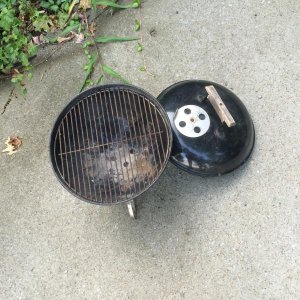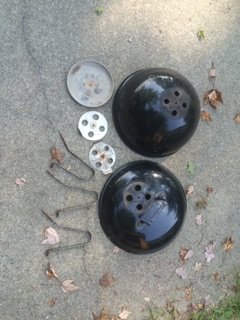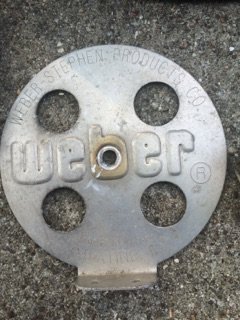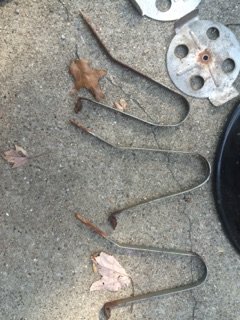BeerBQ
Knows what a fatty is.
I picked up a Smokey Joe at a yard sale yesterday for $4. It is older and has a wooden handle, but other than that I'm not sure of the age. I straightened out the handle a bit and will sand/replace the wood parts of it. This is my first attempt at a restoration and I have run across a few issues:
1) Rust on the lid where the handle connects. Can I just sand this down and paint with grill paint?
2) Rust/chipping on the rim of the lid and rim of the body. I know not to paint the inside, but is this too close to be painted?
3) The bolts that attach the legs are rusted on. I used WD-40 and tapping both ends to try to loosen it but had no luck. The slot in the head seems to have softened and I've come close to stripping it. Is there any way to get these off? I'd like to take them off to sand and paint some rust where they meet and clean some rust of the legs.
Thanks for any advice.

1) Rust on the lid where the handle connects. Can I just sand this down and paint with grill paint?
2) Rust/chipping on the rim of the lid and rim of the body. I know not to paint the inside, but is this too close to be painted?
3) The bolts that attach the legs are rusted on. I used WD-40 and tapping both ends to try to loosen it but had no luck. The slot in the head seems to have softened and I've come close to stripping it. Is there any way to get these off? I'd like to take them off to sand and paint some rust where they meet and clean some rust of the legs.
Thanks for any advice.






